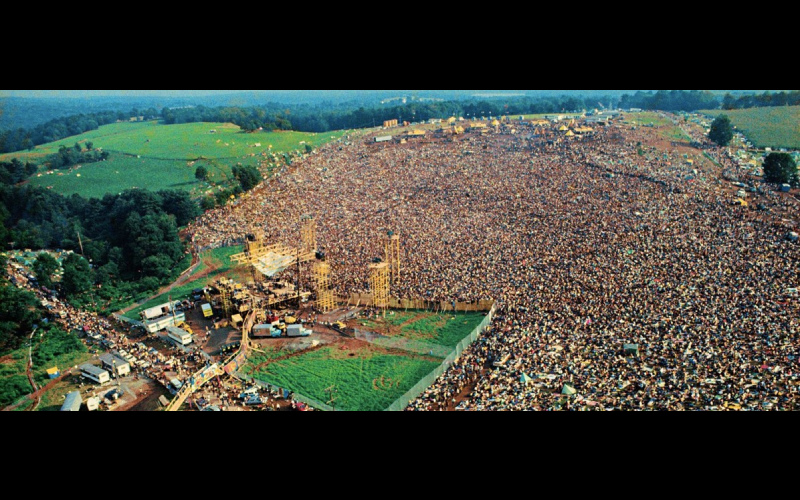
Woodstock: More Than a Concert, Συνέχεια από Α’ Μέρος.
Τα κέρδη των καλλιτεχνών ήταν μάλλον ικανοποιητικά, με τον Hendrix να είναι στην κορυφή της λίστας (Εικόνα 1), αν και λόγω αρκετών καθυστερήσεων, κατάφερε να παίξει μόνο τη Δευτέρα το πρωί (ξημερώματα), με έναν μεγάλο αριθμό των παρευρισκομένων να έχει ήδη αποχωρήσει.
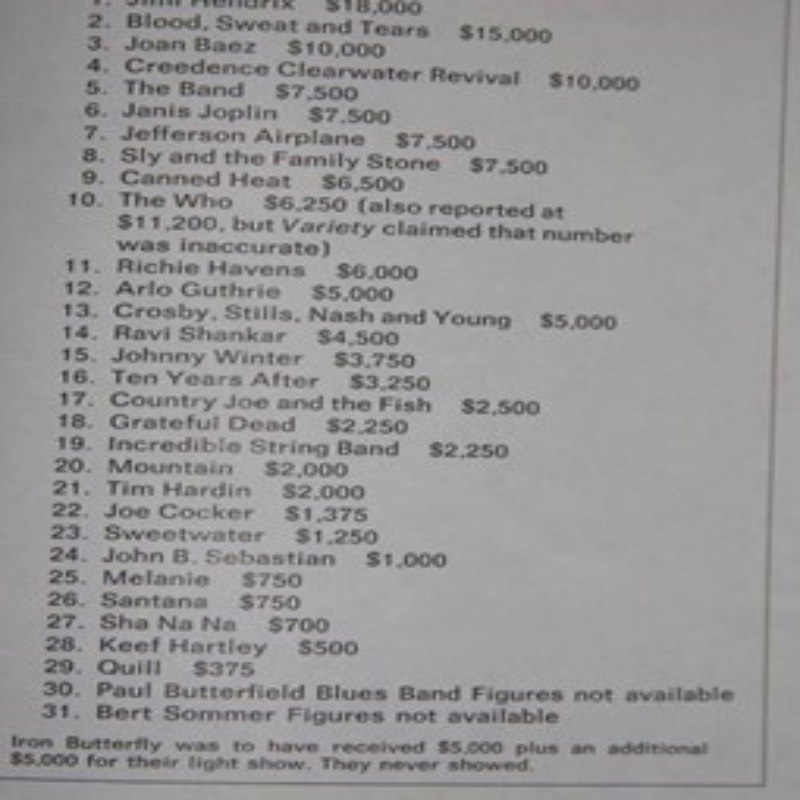
Ωστόσο, κατάφερε να πραγματοποιήσει «το πιο πειστικό, πολιτικό σχόλιο όλων των εποχών, μέσω της rock», (Paytress, 111), ερμηνεύοντας τον εθνικό ύμνο (“The star spangled banner”).
Το “I feel I’m fixing to die rag” του Joe McDonald, αντιπροσώπευε το πιο θεμελιώδες τραγούδι διαμαρτυρίας της εποχής (“What are we fighting for, well ain’t no time to wonder why…. now come mothers throughout the land, pack your boys off to Vietnam”), ενώ η Janis Joplin ήταν μια εμβληματική φιγούρα που «εξέπεμπε» θηλυκότητα, σύμβολο του σεξ της νεολαίας και μια «αντιπροσωπευτική φαντασίωση μιας βιομηχανίας ηδονοβλεψίας» (Gillet, 492). Ένα «βάρος» που έφερε σε όλη την καριέρα της, που τελείωσε, δυστυχώς, με την αυτοκτονία της το 1970.
Αν και ο Joe Cocker ήταν ο σταρ της συναυλίας (μακριά από τα “you can leave your hat on” χρόνια), η κυρίαρχη «φιγούρα» της Joan Baez, θα ολοκλήρωνε το show της πρώτης ημέρας με μια «καταιγιστική» εμφάνιση, λίγο πριν μια πραγματική καταιγίδα φέρει «πίσω» το πρόγραμμα. Η Baez είχε «ζωηρό», πολιτικό λόγο και πράξεις, και θεωρείτο κύριος εκπρόσωπος της πολιτικοποιημένης μουσικής, μαζί με τον σύντροφό της, Bob Dylan. Ήταν κυρίαρχη αντίληψη, ότι θα εξέφραζε τις πεποιθήσεις της για θέματα που οι περισσότεροι δεν θα ήθελαν να πράξουν, όπως ενάντια στην κυβερνητική πολιτική για τους Αμερικανούς Ινδιάνους, τους Λατινοαμερικάνους, τους έγχρωμους του Νότου και φυσικά τον πόλεμο.
Το πλήθος
Εκατοντάδες χιλιάδες συγκεντρώθηκαν στο Bethel της California για το “Woodstock Festival”. Μεταξύ αυτών υπήρχαν άνθρωποι διαφορετικών ηλικιών, Χίπηδες, οπαδοί της pop ή της rock. Δεν μπορώ να πω αν ήταν ήδη εκεί με έναν «άνεμο αλλαγής» στο μυαλό τους ή απλά για να διασκεδάσουν, αλλά ο άνεμος της αλλαγής ήταν «μέλος» αυτού του κοινού μέχρι το τέλος της παράστασης.
Το «σκηνικό» κατά τη διάρκεια των τριών ημερών ήταν σίγουρα «Διονυσιακό». Σεξ και ναρκωτικά στο επίκεντρο. Ο Hendrix έφερε μαζί του την «κουλτούρα των ναρκωτικών» του Σαν Φρανσίσκο. Η κιθάρα του χρησιμοποιήθηκε ως σεξουαλικό σύμβολο (Gillet, 531). Η Joplin, έφερε παραλήρημα με τις παραστάσεις της και δέος με την εμφάνισή της.
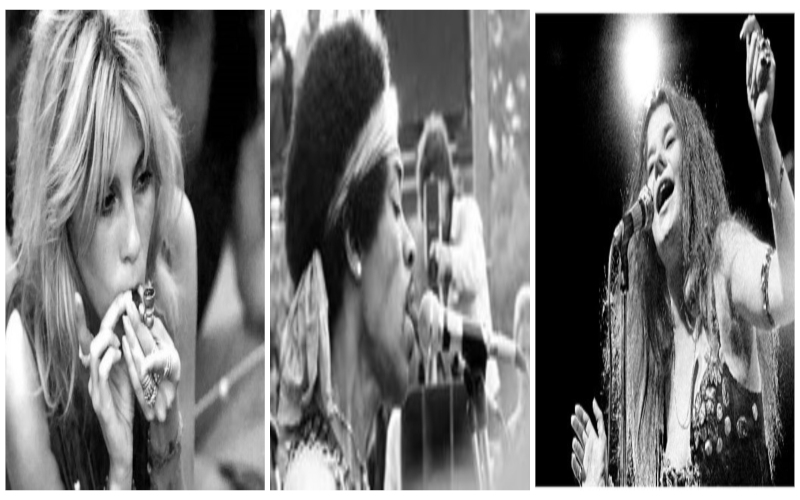
Το γυμνό ήταν παντού. Οι σεξουαλικές πράξεις πραγματοποιόντουσαν ελεύθερα, λαμβάνοντας «έγκριση» ή «αποδοκιμασία» από τους υπόλοιπους παρευρισκομένους. Μετά τη δυνατή βροχή, το πλήθος συμμετείχε σε λασπόλουτρα, γλιστρώντας στα pits που είχαν δημιουργηθεί. Υπήρχε μεγάλη όρεξη για ζωή στα άκρα, ικανοποιημένη από κάθε είδους νόμιμες ή παράνομες απολαύσεις, μαζί με ένα πνεύμα άρνησης και αντίθεσης στον ρατσισμό, τις διακρίσεις, την πολιτική και τον πόλεμο, και υπέρ της ειρήνης.
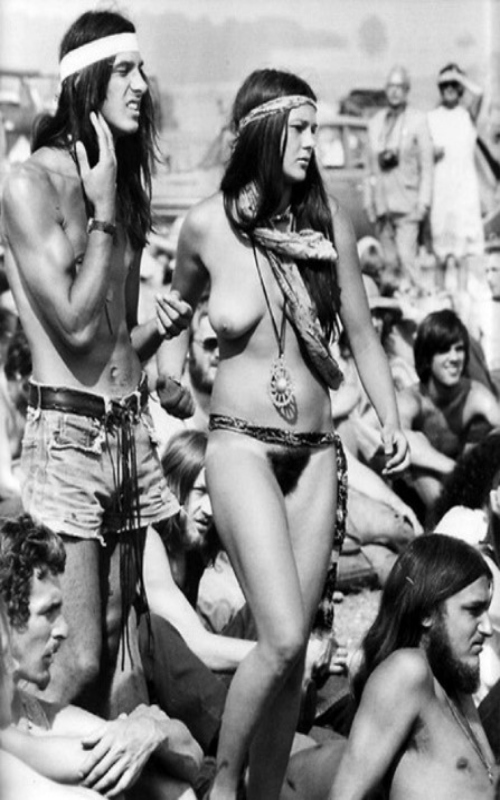
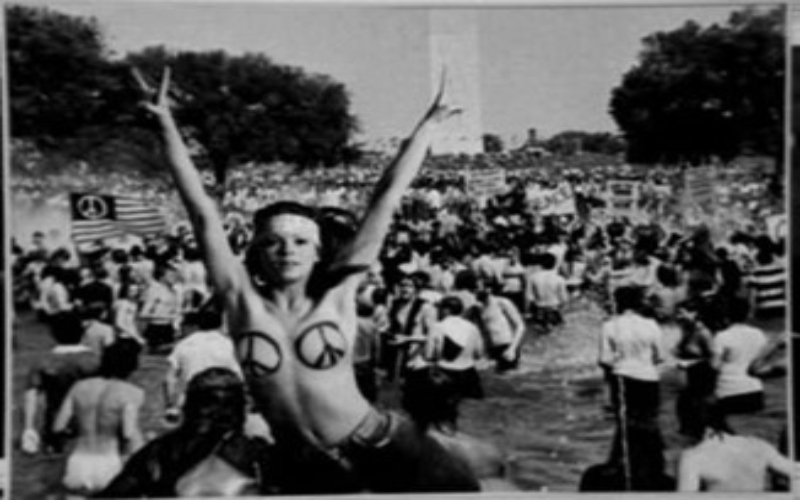
Δεν μπορούμε να ισχυριστούμε με ασφάλεια ότι έκαναν την επανάστασή τους στο Woodstock, αλλά η ατμόσφαιρα ήταν σίγουρα επαναστατική και το μέλλον μέχρι και σήμερα, μπορεί να επιβεβαιώσει τέτοιες έννοιες. Το «χάσμα γενεών», είχε σίγουρα επισημανθεί σαν όρος.
Σε μια άλλη πτυχή των ημερών, οι παρευρισκόμενοι αντιμετώπισαν μεγάλα προβλήματα, αλλά και προκάλεσαν ταυτόχρονα στους κατοίκους της περιοχής. Το μποτιλιάρισμα λόγω του αριθμού των ανθρώπων ήταν τεράστιο. Σε τέτοιο βαθμό, που οι οπαδοί θα εγκατέλειπαν τα αυτοκίνητά τους για να μεταφερθούν στην περιοχή του φεστιβάλ, με επακόλουθο ένα χάος.
Από την άλλη πλευρά, ο βαθμός του πνεύματος αλληλεγγύης, ήταν αξιοσημείωτος. Η τοπική κοινωνία έδειξε εξαιρετική υποστήριξη στους οπαδούς και ικανοποίησε τυχούσες ανάγκες σε νερό ή άλλες προμήθειες και στέγαση, καθώς ακόμη και εκπαίδευση στις ανεπιθύμητες παρενέργειες των ναρκωτικών {ιατρικός όρος, “Adverse Drug Reaction” (ADR)}, οι οποίες ήταν σχετικά μικρές σε αναλογία με το μέγεθος του πλήθους. (Doyle, 8)
Κοινωνικοπολιτικός συσχετισμός/προεκτάσεις & μουσική «ηχώ»
Το αντικομφορμιστικό κίνημα που είχε ρόλο στο Woodstock, είχε και θα συνέχιζε να έχει «αιχμηρό, πολιτικό πλεονέκτημα» (Tsimpouki, 46). Μια ολόκληρη γενιά αναζητούσε τρόπους και έμπνευση για να οργανώσει τις δράσεις της και η rock ήταν ένας από αυτούς. Τα κινήματα κατά του πολέμου, υπέρ ενός καλύτερου μέλλοντος, εναντίον των φυλετικών διακρίσεων, θα γινόντουσαν πιο μαζικά, και ακόμη και αν δεν ήταν μόνο λόγω του Woodstock, σίγουρα βοήθησε εκείνη τη γενιά να πιστέψει ότι θα μπορούσε να απαιτήσει κάτι σημαντικότερο. Καλλιτέχνες όπως ο Bob Dylan και η Joan Baez, πρωταγωνιστές της εποχής, έδωσαν έμπνευση. “The times they are A-Changing”, όπως τραγουδούσε, αποκτώντας την ιδιότητα του «Τραγουδιστή της Διαμαρτυρίας». Οι μαθητές ενέτειναν τις δράσεις τους για την κοινωνική θέση των μαύρων και παρέμειναν στην «καταδίωξη» καλύτερων συνθηκών, για τα ατομικά, σεξουαλικά δικαιώματα και το δικαίωμα της ειρήνης.
Η σύγχρονη «μετενσάρκωση» του «πνεύματος» του Woodstock
Η rock ξεπερνώντας τις «νέγρικες ρίζες» της, «έσπασε» όλα τα ταξικά, φυλετικά και μουσικά «σύνορα». Και ήταν εδώ για να μείνει. Μέχρι τα μέσα της δεκαετίας του ’70, 4 στις 5 ηχογραφήσεις ήταν rock (Levine-Tsimpouki, 326).
Όπως έχει αναφέρει ο Bono (U2): «Ενώ η pop (έλεγε και) λέει ότι όλα είναι εντάξει, η rock (έλεγε και) λέει ότι δεν είναι, αλλά μπορούν να αλλάξουν». Και μια πραγματική αλλαγή, ήταν πιο έντονα αντιληπτό ότι θα μπορούσε να συμβεί, σε αρμονία και ειρήνη, όπως βιώθηκε πάρα πολύ το τριήμερο του Woodstock. Επιπλέον, η γενιά του Woodstock είχε εκπληρώσει, μέσω αυτής της αρμονικής συνύπαρξης, άλλον έναν σκοπό. Να αφαιρέσουν, από τους «μη πιστούς», το επιχείρημα ότι αποτελούσαν ένα μάτσο hippies, αλήτες και κακομαθημένα πλουσιόπαιδα, που προσπαθούσαν να κερδίσουν την προσοχή.
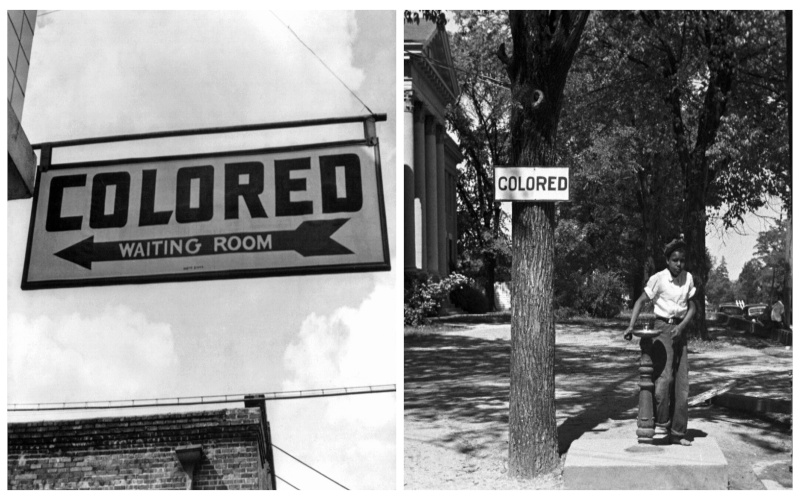
Όπως ανέφερε η Ellen Sander (rock κριτικός) το 1969: «Δεν μπορεί πλέον να παραβλεφθεί ή υποτιμηθεί το μαγικό, πολύχρωμο φαινόμενο της pop κουλτούρας. Συμβαίνει παντού, αλλά τώρα έχει συμβεί σε ένα μέρος, σε μία συγκεκριμένη στιγμή, σε τέτοιο τεράστιο βαθμό, που ήταν ιστορικό… Το κοινό ήταν μια πολύ μεγαλύτερη ιστορία από τους καλλιτέχνες….Αυτό που συνέβη ήταν ότι ο μεγαλύτερος αριθμός ανθρώπων που συγκεντρώθηκαν ποτέ για οποιοδήποτε γεγονός εκτός από έναν πόλεμο, έζησε μαζί, «στενά» και ουσιαστικά και με τέτοια φυσική, θετική διάθεση, που «άναψαν» όχι μόνο όλους γύρω τους, αλλά και τα μέσα μαζικής ενημέρωσης, και, κατ’ επέκταση, εκατομμύρια άλλους, νέους και ηλικιωμένους, ιδιαίτερα πολλά στοιχεία «εχθρικά» προς τα μανιφέστο και αδαείς ως προς την ουσία της pop κουλτούρας». (Doyle, 10)
Και η «λέξη» είχε πράγματι εξαπλωθεί σε όλο τον κόσμο, με πολλούς τρόπους. Ακόμη και μέσα από τα μέσα μαζικής ενημέρωσης, μέσω της μουσικής, μετατρέποντας αυτήν τη στάση ζωής όχι σε ένα Αμερικανικό ζήτημα, αλλά ένα ζήτημα μιας ολόκληρης γενιάς.
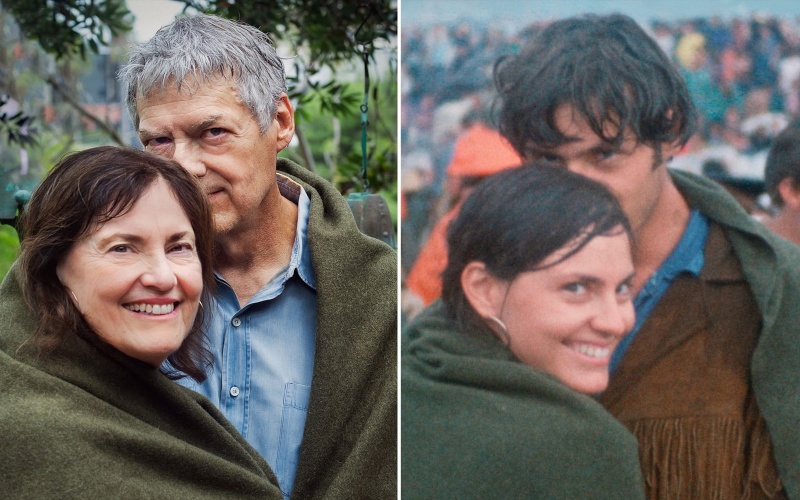
English Version
WOODSTOCK
More than a Concert
”An investigation on the Woodstock concert, as a proclamation of totalitarian freedom”
Abstract
August 15th 1969. Bethel, New York. An about 600 acre dairy farm, destined to become the ”Holy Land” for at least one generation of youths and many musical ones, for decades up to……the future. Approximately 500.000 ”burning” souls, gather in an unplanned meeting, that was meant to become historic and revise the way people thought at that time, holding yet a place in the 10 hugest-crowded concerts of all times.
With Vietnam War, in the major frame of life in America, and the blood from the assassinations of Bobby Kennedy and Martin Luther King still fresh, the social and political situation was fluid. Civil rights, War loses in the other end of the planet, sexual freedom, racial and sexual discrimination, were topics that affected the young people of the era.
What started as a mere concert, would eagerly and quickly turn out to be a vivid representation of a revolution, for years to come. Not only socially and politically, but also in a musical perspective. Jimi Hendrix, Joan Baez, The Who were due to become icon figures and create a musical stream that would last the time’s spoilage and is currently still represented by a non-conformist group of people.
Priceless ”companions” in this journey full of music and sentiments, have been, among others, the undermentioned works, divided in basis of context relativity. Sociopolitical pieces of information, derived from America Divided: The Civil War of the 1960s (Isserman – Kazin, Oxford University Press 2000), The Sixties Are Dead: Long Live Their Legacy (Tsimpouki, University of Athens), musical info through The Sound of the city: The Classic story of Rock (Gillett, New York 1970), I was there: Gigs that changed the World (Paytress, Cassell Illustrated 2005) and Rock & Pop: The complete story (Heatley, Flame tree 2006) or both as in American identities-The literature history of United States 1603-2000 (Levine – Tsimpouki)
This survey’s objective, is to focus on the sociopolitical prolongations of Woodstock festival. Furthermore, it warmly wishes to be an exertion to familiarize readers who aren’t acquainted with this certain event and era, of its importance and influence. Its messages nowadays seem seasonable, in times where people’s power and enthusiasm should be brought forth, in order for a better World to be delivered to our children…..
Historical precedent
Sex, drugs and Rock ‘n’ Roll! Protagonists in overwhelming quantities, upon a festival that was meant to be a landmark in the history of music and not only… But they had entered the youth agenda far earlier than Woodstock. And they were not the only issues there.
America was to witness historic events both in the ’50s and ’60s. The young people of that era, would live and deal with matters not of the unwary nature of their age. Racism, war, sexual freedom, drug use, colored people, women and civil rights in general, high in interest and in the center of attention. Birth reasons for many movements lead by great iconic personalities in the nation’s history.
Vietnam war was in climax and families were in continuous mourning of more and more soldiers. Casualties began to bend morale, both inside and far from the country. It had soon been obvious, that this costly and long-lasting war, only exerted to defend a lost credibility. (Isserman-Kazin 67)
Internally, the black community looked like a boiling can. Civil Rights Act being a government law since 1964, had not made the situation calmer. Even if in the North things had smoothed, the South was still unwilling to conform. Bus and school segregation would still remain unsolved problems.
Vivid personalities were doomed to come forth and take part in the coiling of the masses. Malcolm X and Martin Luther King were iconic between Afro-Americans. Not only iconic, but conflicting as well. King had battled for years for equal rights. He had been the instigator in the public transportation means boycottage. On the other hand, Malcolm X, had an important achievement to his side, the osculation of Islam by the great boxer Muhammad Ali (ex Cassius Clay). Soon enough, his ideology would oppose King’s and his actions (Malcolm X had anyway far righter beliefs) due to being too temperate about blacks’ rights claim. (Levine-Tsimpouki 321,323)
At the same time, more and more social groups would start to question their position in society. Sexual discrimination, women status and sexual freedom,would create new intrenchments. Linda LeClair’s punishment from Bernard College, for living with her boyfriend, Miss America contest protests in 1968 against woman being presented as a ”product” were drops that overflowed the glass. (Isserman-Kazin 152,235)
The questioning of decisions’ morality was getting massive in younger people’s minds. And it was to be greater after the assassinations of Martin Luther King and Robert Kennedy, no more than 5 years after that of his brother JFK and just 3 years after that Malcolm X’s. The reverend who talked about eros, agape and philia in his speeches and the Kennedy who was thought to be the one to unite the country, were in the eyes of the Americans irreplaceable.
The Concert
Festival & artists : Acts and facts
16-18 June 1967. Monterey, California. The foreshadowing of Woodstock, had probably been the International Pop Festival which took place those days. 175.000 souls experienced a magical performance from Janis Joplin, concluding in her appearing for a consecutive second day. The Who and Jimi Hendrix Experience (his band at that time), accompanied her in an ”ear-destructing” performance, delivered with the ”sacrifice” of Jimi’s guitar and Who’s equipment. Flower power and the Hippies shouted present, 500.000 dollars were gathered for charity, but basically, as Mark Paytress states in his book ”I was there : The gigs that changed the world”, ”Rock was starting to replace innocent Pop”.
15-17 August 1969. Bethel, New York. Michael Lang and Artie Kornfeld, ”fathers” of the Woodstock idea, (John Roberts & Joel Rosenman budgeted the event) could not have imagined the historic outcome of their idea nor the huge success of it. 500.000 souls are estimated to have experienced numerous acts, and have constituted a part of history, musical or not, placing the festival, still in top ten most crowded ones ever. Reviewing the line up, millions more would wish to attend such set, musically speaking, let alone the historical aspect. Even if it could have been even more glamorous, since huge names as Led Zeppelin (manager decided headlining own concert preferable, than ”being another band on the bill”), Rolling Stones, Jethro Tull, The Beatles, The Doors (Robby Krieger would later say:“We never played at Woodstock because we were stupid and turned it down. We thought it would be a second class repeat of Monterey Pop Festival.”) or even Bob Dylan, whose house was nearby Woodstock concert area, for many reasons would, at last minute, not turn in.
The artists’ s earnings were rather satisfactory, Hendrix topping the list, although due to several time delays, he only managed to play Monday morning, a great amount of the attendants having departed already. Nevertheless, he managed to make ”the most convincing political comment of all times through rock” (Paytress 111), performing the national anthem (”The star spangled banner”). Joe McDonald’s playing ”I feel I’m fixing to die rag” represented the most fundamental song of protest of the era (”What are we fighting for, well ain’t no time to wonder why….now come mothers throughout the land, pack your boys off to Vietnam”) Janis Joplin an iconic figure, transmitting femininity, sex symbol of youth and a ”representative fantasy of an industry of voyeurs” (Gillet 492). A burden she carried through her whole career that ended sadly at her suicide in 1970.
Even though Joe Cocker was the star of the concert (far away from the ”you can leave your hat on” years), the dominant figure of Joan Baez would finish first day’s show with a storming appearance, just a while before a real storm hampered back the schedule. Baez had vivid political speech and actions and was considered a major representative of politicized music, along with her consort Bob Dylan. Even if there are different notions, it is predominant that she would utter her beliefs of matters that most would not, like against government politics on American Indians, Latin Americans, colored of the South and of course war.
The crowd
Hundreds of thousands gathered in Bethel, California for Woodstock festival. Amongst them were people of different ages, Hippies, Pop or Rock fans. I cannot say if they were there already there with a wind of change in their minds or just to have fun, but the wind of change was a member of that audience by the end of the show.
The scenery during the three days was most certainly Dionysian. Sex and drugs in epicentre. Hendrix brought together the drug culture of San Francisco, his guitar was used as a sexual symbol. (Gillet 531) Joplin, brought delirium with her performances and awe by her looks.
Nudity was everywhere. Intercourse took place freely, receiving approval or disapproval by other attendees. After the heavy rain, crowd would take part in mud baths, sliding in the pits. There was a great appetite for life in the edge, satisfied by all kinds of legal or outlaw pleasures, together with a spirit of denial and opposition to racism, discrimination, politics and war and in favor of peace.
We cannot safely allege that they were having their revolution in Woodstock, but the atmosphere was most certainly rebellious and the future up to now, can assure of such notions. The ”generation gap” had surely been pointed out.
In another aspect of the days, attendees experienced great discomfort but caused to the residents of the area at the same time. The traffic jam due to the amount of people were vast. In such a degree, that fans would abandon their cars in order to move to the festival area with chaos as aftermath.
Remarkable has been on the other hand the degree of cooperation spirit. The local community showed outstanding support to the fans and satisfied any needs of water or other supplies and housing, as well as training of adverse recreational drug reaction, which were relatively small in proportion to the amount of the crowd. (Doyle 8)
Sociopolitical correlation/prolongations & musical ”echoes”
The counterculture movement which had a role in Woodstock, had and would continue to have ”sharp political edge”. (Tsimpouki 46) A whole generation was seeking ways and inspiration for organizing its actions and Rock was one of them. Movements against war, of a better future, against racial discrimination would get more massive, and even if it would not be because of Woodstock alone, it certainly helped that generation believe they could demand something greater. Artists like Bob Dylan and Joan Baez, protagonists of the epoch, gave inspiration. ”The times they are A-Changing” like he was singing, acquiring the status of the ”Remonstration Singer”. Students intensified their actions for the social position of Blacks and stayed in pursuit of better conditions, for civil, sexual rights and the right of peace.
Woodstock’s spirit contemporary reincarnation
Rock surpassing its negro roots, broke all class, race and music borders. And it was here to stay. By the mid 70s, 4 out of 5 recordings, had been Rock. (Levine-Tsimpouki 326) As Bono (U2) , has quoted: ”While Pop (was and) is saying everything is OK, Rock (was and) is saying it is not but it can be changed”. And a real change was more intensely perceived it could happen, in harmony and peace, as it was immensely experienced the three days of Woodstock. Woodstock generation had moreover fulfilled, via this harmonic co-existence, another scope. To deprive non-believers of the argument, that they constituted a bunch of Hippies, punks and spoiled rich kids just trying to gain attention.
As Ellen Sander (Rock critic) quoted in 1969: ”No longer can the magical multicolored phenomenon of pop culture be overlooked or underrated. It’s happening everywhere, but now it has happened in one place at one time so hugely that it was historic…The audience was a much bigger story than the groups….What happened was that the largest number of people ever assembled for any event other than a war lived together, intimately and meaningfully and with such natural good cheer that they turned on not only everyone surrounding them but the mass media, and, by the extension, millions of others, young and old, particularly many elements hostile to the manifestations and ignorant of the substance of pop culture”. (Doyle 10)
And the word has been indeed spread worldwide in many ways. Even through the mass media, through music, turning this posture of life not an American issue but an issue of a whole generation.
Written by Stavros Vlahos, with the help of Alexia Vogdou
Faculty of English Studies
Course : The Culture Wars of the 1960’s
Instructor : Theodora Tsimpouki
Works cited – Secondary Sources
Isserman Maurice–Kazin Michael, America Divided: The Civil War of the 1960s, Oxford University Press 2000
Tsimpouki Theodora, The Sixties Are Dead: Long Live Their Legacy, University of
Athens
Levine Paul– Tsimpouki Theodora, American identities-The literature history of
United States (1603-2000)
Gillett Charlie, The Sound of the city: The Classic story of Rock New York, 1970,
Athens: New Frontiers Livanis Publications, 1994
Paytress Mark, I was there: Gigs that changed the World, London Cassell Illustrated, 2005, Athens Savalas Publications, 2006
Heatley Michael, Rock & Pop: The complete story London Flame tree, 2006
Web Page, “Woodstock” (Woodstock.com)
Web Page, “History”
Web Page for Martin Luther King (kingcenter.org)
Wikipedia
Web Page, “The Economic Times” (“List of the most crowded music concerts in
history”)
Web Page, “Consequence of sound” (Geslani Michelle 09-03-2015 Woodstock artists’
earnings)
Web Page, “Ultimate classic Rock” (De Riso Nick,10 Rock Stars who didn’t play
Woodstock)


